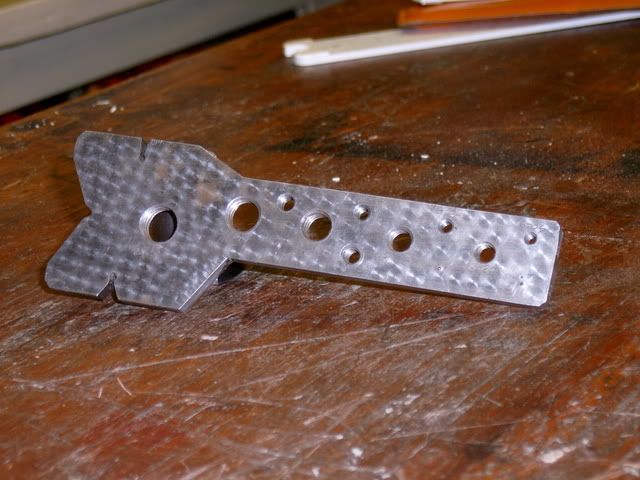mklotz
Well-Known Member
A constantly recurring task in the shop is determining/verifying the thread size on assorted nuts and bolts.
Years ago, I drilled a plate with all the tap drill holes needed for the threads in which I'm interested - even the oddball ones like 2-64. Then, whenever I had a tap set up for something I was making, I'd take a minute and run it through the appropriate sized hole.
In a similar vein, I drilled a block of wood with the clearance holes for the various bolt sizes. As I acquired the relevant bolt (or had to make one), I'd drop an extra into the appropriate hole.
As a result, I now have a surprisingly complete set of "standards" that I can turn to when sizing.
Another variant of this idea is to save rod cutoffs too small to be of much use. When you're set up to make a given thread, turn down and thread one half of the cutoff, then flip it around and drill and tap to the same thread. Use a vibratory marker to engrave the cutoff with the thread size. Once you've got a collection of these, string them on a wire and hang them somewhere handy for future reference.
I've done something similar with spark testing samples. Whenever I get a piece of metal OF KNOWN PROVENANCE, I engrave a small sample, drill it and string it on a wire. In addition to spark testing, these samples are also handy for determining the density of known materials when that is required.
Years ago, I drilled a plate with all the tap drill holes needed for the threads in which I'm interested - even the oddball ones like 2-64. Then, whenever I had a tap set up for something I was making, I'd take a minute and run it through the appropriate sized hole.
In a similar vein, I drilled a block of wood with the clearance holes for the various bolt sizes. As I acquired the relevant bolt (or had to make one), I'd drop an extra into the appropriate hole.
As a result, I now have a surprisingly complete set of "standards" that I can turn to when sizing.
Another variant of this idea is to save rod cutoffs too small to be of much use. When you're set up to make a given thread, turn down and thread one half of the cutoff, then flip it around and drill and tap to the same thread. Use a vibratory marker to engrave the cutoff with the thread size. Once you've got a collection of these, string them on a wire and hang them somewhere handy for future reference.
I've done something similar with spark testing samples. Whenever I get a piece of metal OF KNOWN PROVENANCE, I engrave a small sample, drill it and string it on a wire. In addition to spark testing, these samples are also handy for determining the density of known materials when that is required.





